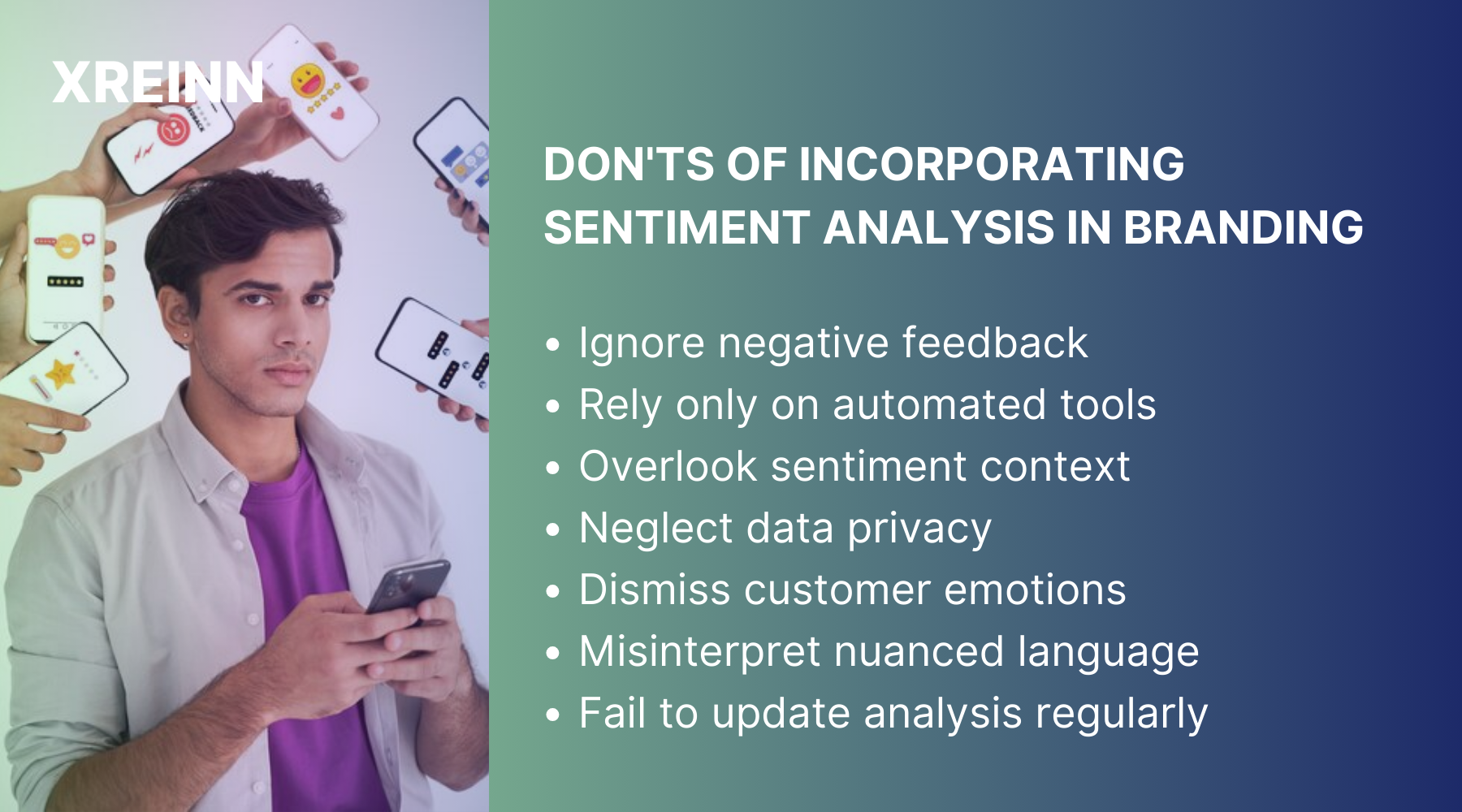Social Listening
The Do's and Don'ts of Incorporating Sentiment Analysis in Branding
Jul 14, 2024
To truly connect with your audience, you must understand their emotions and perceptions. Sentiment analysis is a powerful tool that shows how customers feel about your brand in real time. By thoroughly examining customer feedback, social media conversations, and online reviews, you can gather essential insights that drive your brand's success.
In this guide, we'll explore how sentiment analysis can transform your brand strategy, offering expert guidance on the do's and don'ts to ensure you make the most of this invaluable resource.
Understanding Sentiment Analysis
Sentiment analysis is a technique used to identify and categorize opinions expressed in text, especially to determine whether the writer's attitude toward a particular topic, product, or service is positive, negative, or neutral. This process involves natural language processing (NLP) and machine learning algorithms to analyze large volumes of data from various sources like social media, reviews, and surveys.
Sentiment metrics, such as sentiment scores and emotion categories, help quantify the data. Tools like Brandwatch and Lexalytics can provide comprehensive sentiment analysis, offering insights into customer sentiment trends and emotions.
The Importance of Customer Sentiment in Branding
Customer sentiment significantly influences how your brand is perceived. Positive sentiments can improve brand loyalty and customer retention, while negative sentiments can harm your reputation. Take, for example, the case of a popular coffee chain that used sentiment analysis to address customer complaints about its mobile app. By quickly identifying and resolving the issues, they not only improved the app's functionality but also enhanced customer satisfaction and loyalty.
Real-life examples like this demonstrate the power of sentiment analysis in shaping brand perception and strategy. Understanding how your customers feel about your brand allows you to make informed decisions that can lead to increased engagement and loyalty.
Do's of Incorporating Sentiment Analysis in Branding

Do Understand Your Audience
Start by conducting thorough audience research to identify sentiment trends. Use sentiment tools to gather and analyze data from multiple channels. For instance, analyzing social media conversations, online reviews, and customer surveys can provide a comprehensive view of your audience's sentiments.
Do Set Clear Objectives
Define what you aim to achieve with sentiment analysis. Are you looking to improve customer service, improve marketing campaigns, or understand product feedback? Align your sentiment analysis goals with your overall brand strategy to ensure consistency and effectiveness.
Do Act on Insights
Develop actionable strategies based on sentiment analysis findings. If customers express dissatisfaction with a particular aspect of your product, take steps to address it. Implement changes in customer service, product offerings, and marketing messages to align with customer expectations.
Do Continuously Monitor and Adapt
Sentiment analysis is not a one-time activity. Regularly update your analysis to stay current with evolving customer sentiments. Adapt your strategies based on the latest sentiment trends to maintain relevance and effectiveness.
Do Use Reliable Sentiment Tools
Evaluate and choose sentiment tools that suit your brand’s needs. Effective tools like Brandwatch and Lexalytics can provide deep insights into customer sentiments, enabling you to make data-driven decisions.
Don'ts of Incorporating Sentiment Analysis in Branding

Don’t Ignore Negative Sentiment
Address negative feedback promptly and constructively. Ignoring or dismissing negative sentiments can worsen the issue and damage your brand's reputation. Instead, view negative feedback as an opportunity to improve and demonstrate your commitment to customer satisfaction.
Don’t Rely Solely on Automated Tools
While sentiment analysis tools are powerful, they are not infallible. Human oversight is essential in interpreting sentiment data accurately. Combine quantitative data from tools with qualitative insights from customer interactions to gain a comprehensive understanding.
Don’t Overlook Context
Context is also important in sentiment analysis. Misinterpreting sarcasm, irony, or nuanced language can lead to incorrect conclusions. Ensure you understand the context behind sentiments to accurately gauge customer emotions.
Don’t Neglect Data Privacy
Ensure ethical use of customer data in sentiment analysis. Comply with data privacy regulations and maintain customer trust by handling their data responsibly. Transparency about how you use and protect customer data is essential.
Implementing Sentiment Analysis in Your Brand Strategy
Integrating sentiment analysis into your brand strategy involves several steps. First, select the right tools and resources for conducting sentiment analysis. Train your team to effectively use these tools and interpret the data. Start by analyzing customer feedback from various channels to identify sentiment trends. Use these insights to inform your brand strategy and make data-driven decisions.
For example, if sentiment analysis reveals that customers love your product but are frustrated with delivery times, you can focus on improving your logistics to improve customer satisfaction. Regularly monitor sentiment trends and adapt your strategies to stay aligned with customer expectations.
Measuring the Impact of Sentiment Analysis on Your Brand
To measure the effectiveness of sentiment analysis, track key performance indicators (KPIs) such as customer satisfaction scores, engagement rates, and sentiment scores. These metrics can help you measure the impact of sentiment analysis on your brand strategy.
For instance, after implementing changes based on sentiment analysis, monitor whether customer satisfaction scores improve. Analyze engagement rates on social media to see if your audience is responding positively to your new strategies. Case studies of brands that saw measurable improvements through sentiment analysis can provide valuable insights and inspiration.
Conclusion
Sentiment analysis provides a major tool for understanding and responding to customer emotions, allowing you to refine your brand strategy effectively. By integrating these insights, you can improve customer satisfaction, build lasting loyalty, and make the best decisions that align with your audience. Learn sentiment analysis to stay ahead in the competitive market, ensuring your brand remains relevant and connected to your customers' evolving needs. Start incorporating sentiment analysis today to transform your brand strategy and achieve sustained success.

Data Analytics
Jun 27, 2024Master key concepts in data analytics with practical tips to enhance decision-making and achieve success in your projects and professional growth

Data Analytics
Jul 01, 2024Learn the essential stages of the data analytics workflow to turn your data into valuable business insights and drive growth.

